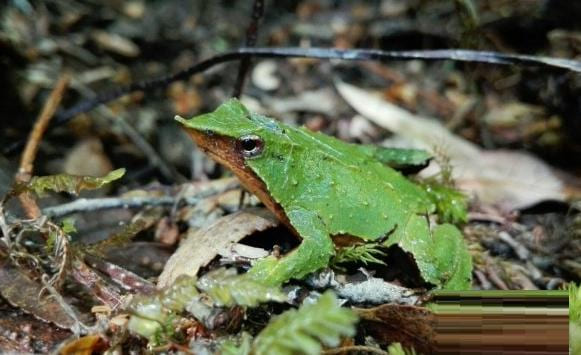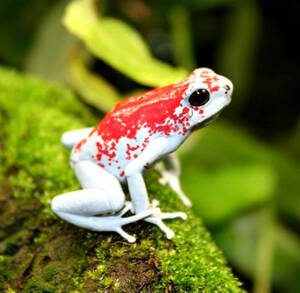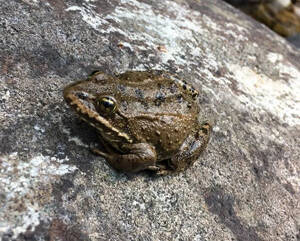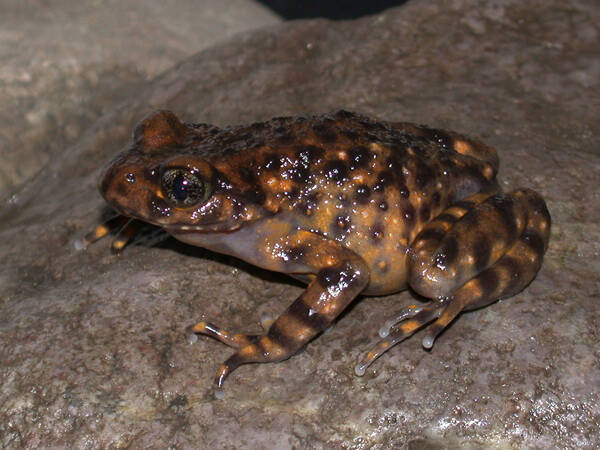Glandirana minima
IUCN
LCBasic Information
Scientific classification
- name:Glandirana minima
- Scientific Name:Glandirana minima,Little Gland Frog,Rana minimus
- Outline:Anura
- Family:Anura Ranidae Glandularia
Vital signs
- length:27-29mm
- Weight:-
- lifetime:-
Feature
Endemic to China, distributed in Fujian, China
Distribution and Habitat
Endemic to China, distributed in Fujian (suburban Fuzhou, Fuqing, Changle, Yongtai).
Lives in mountainous or hilly areas at an altitude of 110-550m. Adult frogs often live in small puddles, swamps or grass beside streams. Breeding occurs from June to September, and male frogs make a "chi, ga ga ga" sound.
Appearance
The head is slightly longer than the head is wide; the eardrum is round and large, slightly smaller than the eye diameter; there are two small groups of vomerine teeth. The skin on the back of the body is rough, covered with longitudinal long skin ridges and small white glandular grains, mostly arranged in about 8 rows; the skin on the ventral side is smooth, and there are flat glands on the chest side, below the back of the thigh and around the anus, and they are dense. The back is yellow-brown with a few black spots, and some have light ridges; the limbs have horizontal stripes; the ventral side has dark spots. The nuptial spines on the first finger of the male are dense.
Details
The small glandular frog is an amphibian of the family Ranidae, living in small puddles, marsh ditches or grass beside terraces in hilly areas at an altitude of 110-550 meters. During the breeding season, male frogs often squat on the water plants or in the grass beside the ditch or puddle and call. Distributed in Fujian, China.
During the breeding season, male frogs often squat on the water plants or in the grass beside the ditch or puddle and call, and the call sounds like "gi! ga, ga, ga, ga...", starting with a single syllable, and then short and continuous several or even more than ten sounds.
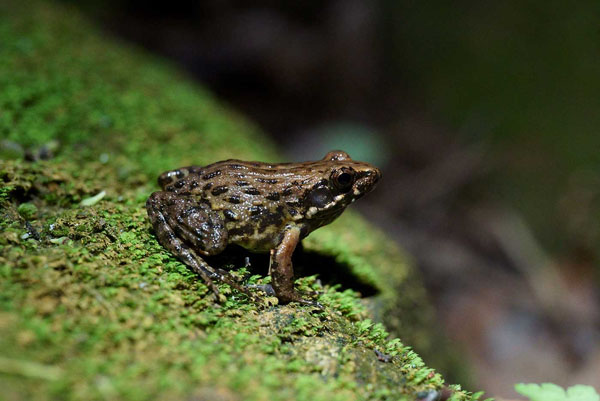
The breeding season is from June to September. The eggs are laid in still water ponds, floating on the water surface or attached to water plants, with 221-318 eggs laid at a time. A female frog can lay eggs twice a year. Fertilized eggs develop to the gill blood circulation stage after about 80 hours at a water temperature of 25-29℃, that is, most of them hatch into tadpoles. The tadpoles hatched from eggs laid in June and July begin to metamorphose in September of the same year; the eggs laid in August and September overwinter as tadpoles and metamorphose in the spring of the following year; metamorphosis to sexual maturity takes about 1 year.
The small gland frog is only found in the eastern part of Fujian Province, China. Its morphological characteristics are very different from those of other families. It is a single genus and a single species, which is of great significance in the study of inter-generic classification and evolution of the Ranidae family. This frog lives near rice fields and hilly areas, and also has a preventive effect on forest pests.
The small gland frog has a narrow distribution area, its habitat is fragmented and the quality is declining, and its population is extremely small.
It is listed in the second level of the "List of National Key Protected Wildlife in China".

